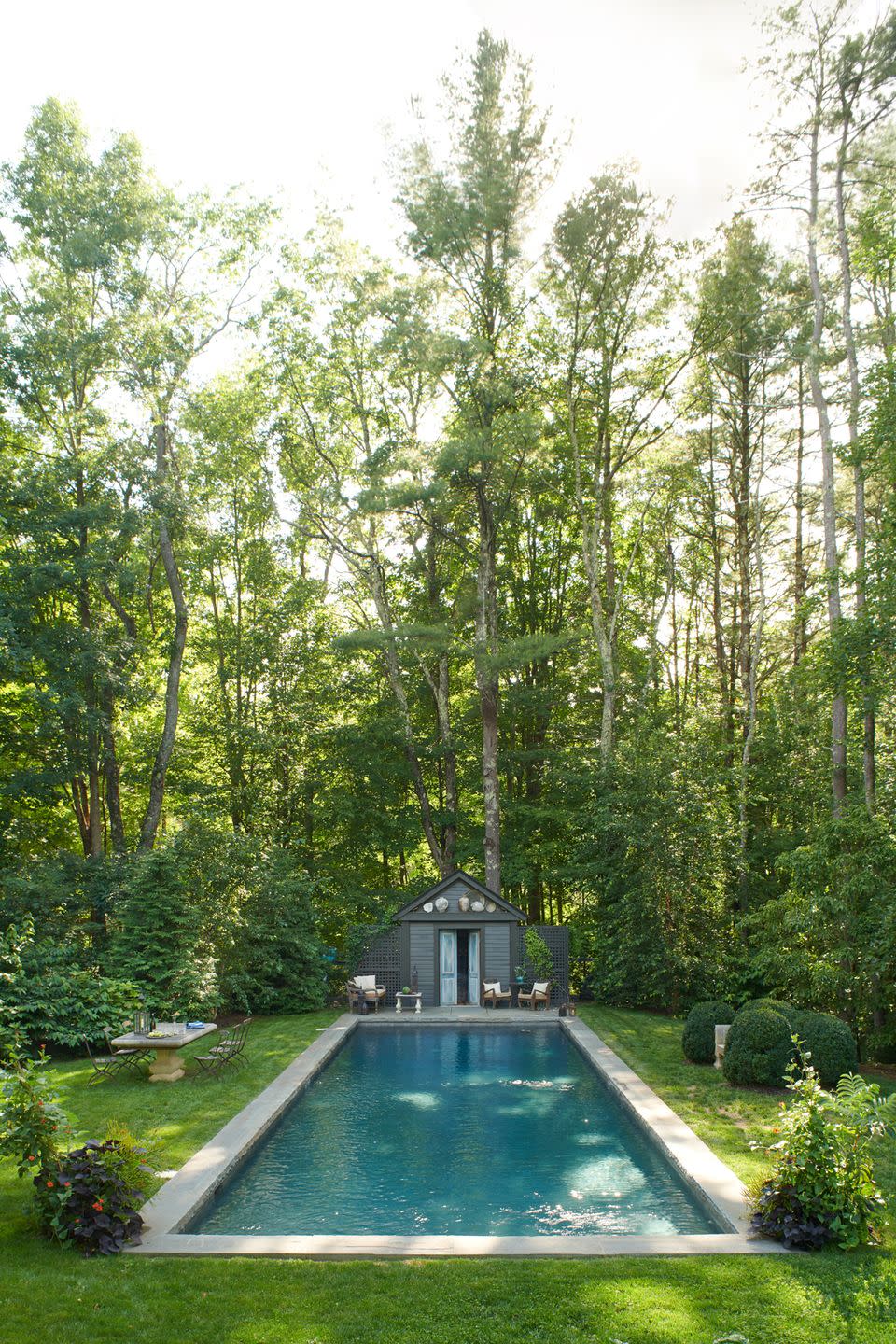The Most Common Reasons Your Lawn Looks Bad—And How to Fix It
So you daydream of a perfect, lush green lawn while the reality is, yours might be a little sad-looking—but don’t be too hard on yourself! “Having realistic expectations is probably the most important thing to remember about lawns,” says Clint Waltz, Ph.D., extension turfgrass specialist at the University of Georgia’s Turfgrass Research & Education Center. “Most of us are never going to have a lawn that is completely weed-free or looks like Augusta National Golf Course.”
That being said, there’s plenty you can do to ensure your lawn stays healthy and looks its best without dedicating your whole weekend to it, says Waltz. So if your lawn is looking a little scraggly right now, keep reading to find out if you've accidentally been making any of common lawn management mistakes, and then learn how to get your yard back in tip-top shape.
Mistake #1: Mowing at the Wrong Height
Like any plant, grass needs to make food through photosynthesis. If you cut the blades too short and remove too much of the plant at a time—this is called scalping—your grass becomes stressed (just like we would be after a bad haircut!). Repeated scalping causes your grass to become sparse, leaving room for weeds to take over. On the other hand, a higher mowing height allows roots to grow deeper, which helps grass stand up better to environmental stresses such as heat and cold, says Waltz.
The Solution:
When you mow, remove no more than 1/3 the total leaf area, says Waltz. Because each type of grass has an ideal mowing height range for its species, identify what kind of grass you have. If you don’t know, your local university coop extension service (find yours here) can identify it and suggest mowing height ranges for your region.
Mistake #2: Letting Pets Urinate on the Lawn
Brown or gold dead patches are often due to pet potty breaks. In sparse lawns, you may see a green ring around the dead area, too, because the grass has responded to the nitrogen in urine. Damage occurs because animal urine contains highly concentrated salts that dehydrate grass (so don't worry—it has nothing to do with your dog’s diet or urine pH health). And, despite what you may have heard, giving your pet home remedies like tomato juice and supplements won't actually prevent lawn spots. Many are marketed that way, but there’s actually zero science to support those claims (and they may even harm your pet).
The Solution:
The good news is that the grass surface typically is just burned, not dead, says Waltz. One way to reduce the chances of damage is to dilute the area by pouring water on it immediately after potty breaks. Or retrain your pet to go elsewhere on the lawn where it’s not as visible or in an area mulched with rock or wood chips. If you need to patch your lawn and replant the area, scrape up the dead grass, rake up the soil, add seed, and keep the area watered until grass sprouts. And, moving forward, train pets to urinate in a designated mulch or brick area in your yard, or while on a walk.

Mistake #3: Using Fertilizer Incorrectly
Timing also is crucial. If you put fertilizer down too soon, plants can’t use it before root activity starts. Nutrients get wasted and leached into the groundwater (not good for the environment!) instead of feeding plants. For warm-season grasses, apply spring fertilizer when soil temperatures remain about 65 degrees at a four-inch depth, which is typically April to May. Cool-season grasses have active growth that occurs when soil temps are in the 50s, which is also April to May. In transitional areas of the country, you may have both types, says Waltz. Because timing varies each year, search for “soil temperature maps near me” or check here to make sure you’re being smart about your application.
Not applying fertilizer correctly can result in striping or dead areas in your lawn. It could be caused by issues such as accidentally overlapping application areas, using the wrong amount of fertilizer, or fertilizer spills. Most of the time, dead areas will have straight margins, rather than more uneven borders like you might see with damage from diseases or insects. Don’t panic: The lawn usually will recover in time (though not always). You’ll have to wait and see.

The Solution:
Turfgrass (the term for grasses that form a lawn) need at least 16 nutrients for normal growth. But before you put one single thing on your lawn, do a soil test every few years, says Waltz. Otherwise, you’re just wasting money and product. Your local coop extension service usually can perform one for a small fee (often about $20).
However, next time, “trust the bag and follow the instructions for the setting you should use on your spreader,” says Waltz. If you aren’t sure how big your lawn is, pull up your yard on Google, drop some pins and calculate the square footage. That way, if you buy a bag that covers 5,000 square feet and your lawn is only 3,000 square feet, you know you should have a little less than half left over when you’re done. Also, always fill the spreader on a hard surface, rather than on the grass, and sweep up spills.
Mistake #4: Watching the Calender Instead of the Temp
If you're seeing lots of weeds, even if you used a lawn care product, it might be because you've been watching the calendar and managing your yard accordingly. But here's the thing: A pre-emergent herbicide will stop weeds before they germinate. For example, annual weed crabgrass germinates around 55 degrees no matter where you live, so get it down when soil temps reach that point, says Waltz. If you apply it too late, many weeds already will have popped up.
The Solution:
Pay attention to soil temperatures and then treat the lawn accordingly. A pre-emergent herbicide will stop weeds before they germinate. But some weed aren’t affected by pre-emergent products and require treatment after the fact. For perennial weeds such as dandelions, for example, use a post-emergent herbicide; look for those that say three-way on the bag. Some weeds, such as nutsedge, require herbicides specifically designed for them. If you don’t know what you’re dealing with, contact your local coop extension service. They’re the local experts and can offer regional advice.
Follow House Beautiful on Instagram.
You Might Also Like

